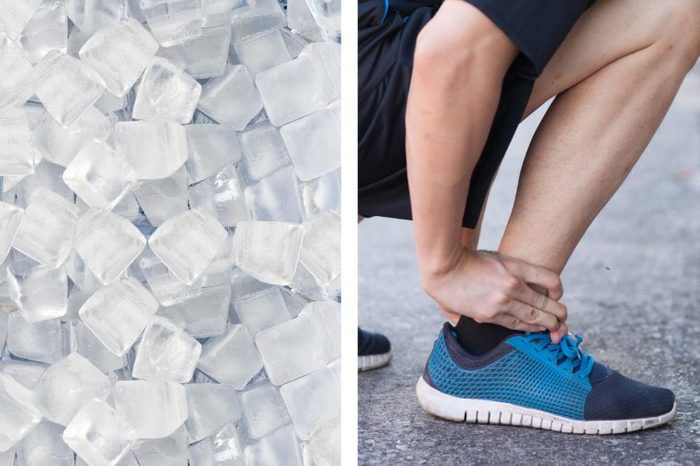
Sprains: Ice
“Heat is usually a bad idea right after an injury, regardless of whether it is a sprain or strain,” says Mark Conroy, MD, assistant professor of emergency medicine and sports medicine at The Ohio State University Wexner Medical Center. “Any injury that is warm and swollen can get more swollen if heated, but often can benefit from some ice.”
Read on to find out how to find the best running shoes for you.
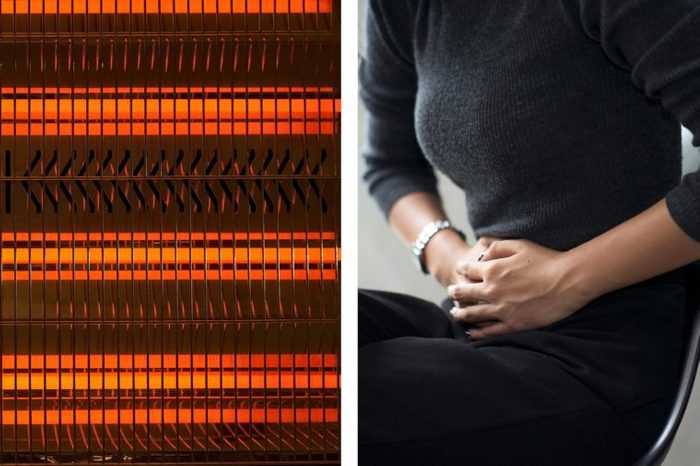
Menstrual cramps: Heat
A heat pack will do much more to help with the aches and pains of your period. “Heat has been shown in studies to be better for menstrual cramps when compared with other treatments,” Dr. Conroy says. “The thought is that menstrual cramps are caused by prolonged and painful contraction of the uterus. The heat acts to loosen the muscle and improve blood flow, thereby relieving pain.”
Here are six of the best natural remedies for menopause symptoms.
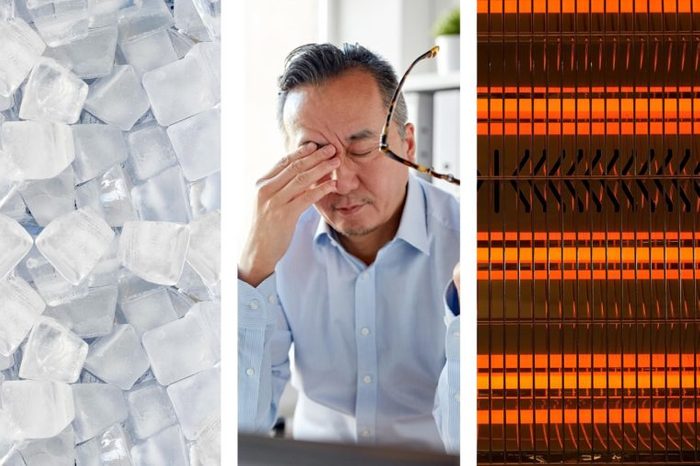
Headaches: Ice or heat
The right treatment depends on the type of headache you have. “Headaches caused from tension can benefit from heat therapy, which helps relax tight muscles throughout the neck and jaw,” says Jeffrey Yellin, DPT, CSCS, at Professional Physical Therapy. “Sinus headaches can also benefit from the use of heat therapy to help warm nasal passages and loosen some of the built-up secretions. Migraines, or other vascular induced headaches, tend to respond better with the use of cold therapy.”
You could also try these home remedies for headaches.
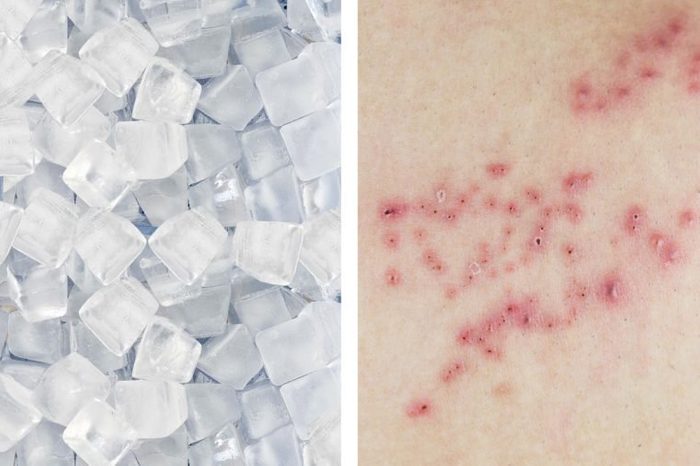
Hives: Ice
One of the fastest ways to soothe the itching and swelling from this irritating allergic reaction is to place cool compresses on the itchy spots—as long as you haven’t developed hives that were induced by the cold.
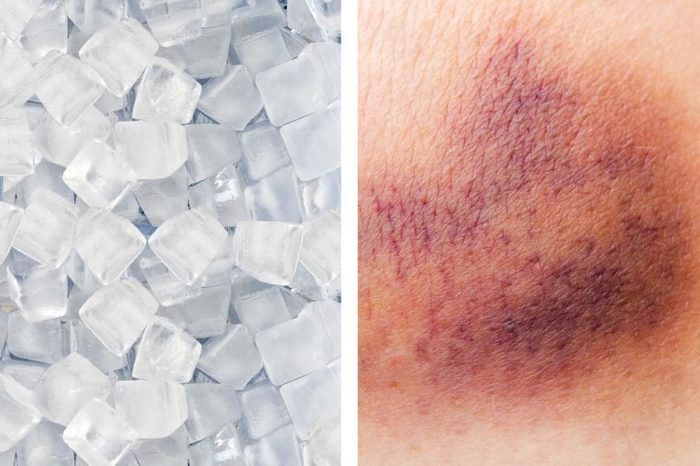
Bruising: Ice
The minute you see a black-and-blue appear, apply ice to the site of the bruise for 15 minutes every hour after the initial injury happens. Ice packs can help the bruise heal faster, swell less, and help numb the pain.
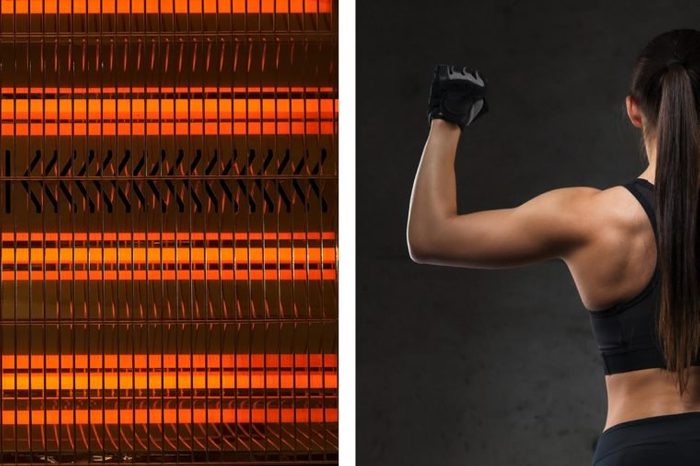
Muscle strain: Heat
A little ice might be helpful if it’s an acute injury, but for muscle stiffness and aches, moist heat from a hot shower could do the trick. “Heat is more helpful when there is some lingering stiffness in the joint or muscle,” Dr. Conroy says. “It loosens muscles and tendons and can relieve lingering symptoms related to stiffness.”
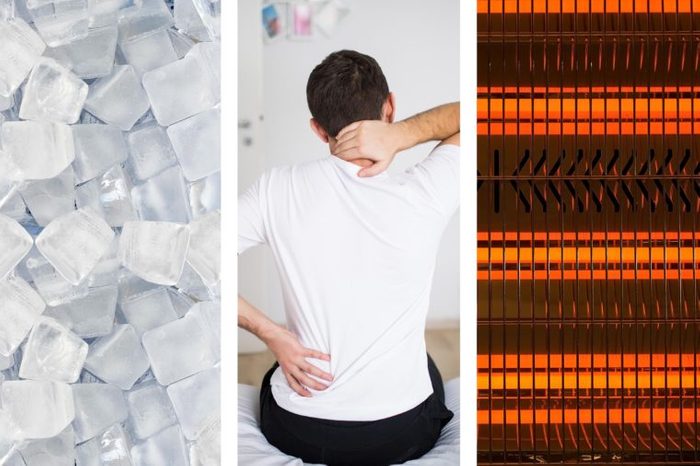
Back pain: Ice, then heat
“With lower back pain, often the person may get some immediate pain relief from using ice,” Dr. Conroy says. “In the long run, however, some lower back pain is related to stiffness and benefits from heat to loosen potential muscle spasms.”
Try these 10 tips to relieving back pain.
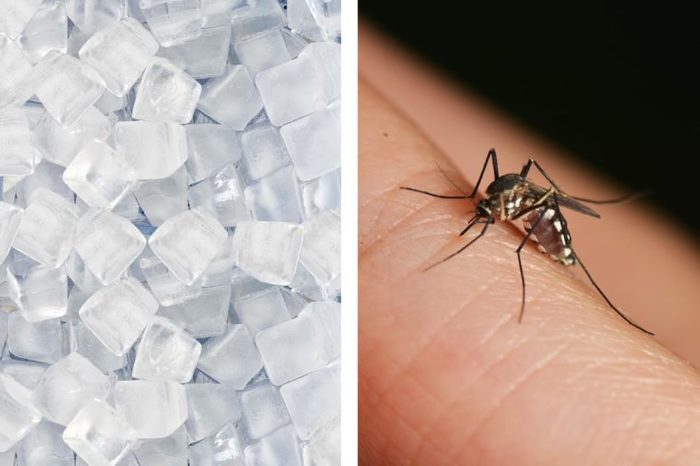
Insect bites: Ice
“A short duration of ice to a bug bite certainly can provide some initial relief from the pain and tenderness associated with the bite,” Dr. Conroy says. In addition to taking away a bit of the sting, it may help reduce inflammation at the bite site.
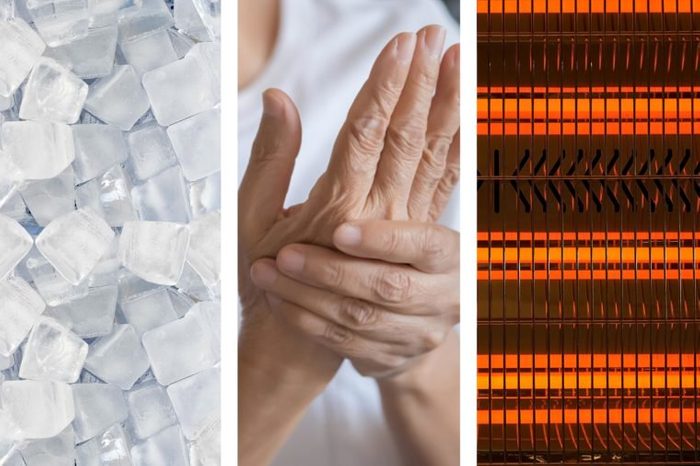
Arthritis: Ice or heat
The best treatment for your arthritis may depend on your symptoms. “Arthritic conditions involve the wearing of cartilage on the articular surfaces of the joint,” Yellin explains. “With enough compression and friction around these joints, you can develop a lot of inflammation within the joint. This inflammation can also lead to pain and tight muscles around the arthritic joint. Heat may be beneficial to loosen up tight muscles, but ice may be a better choice to treat inflammation within the joint.”
Learn the 10 types of arthritis you could have—and how to tell the difference.
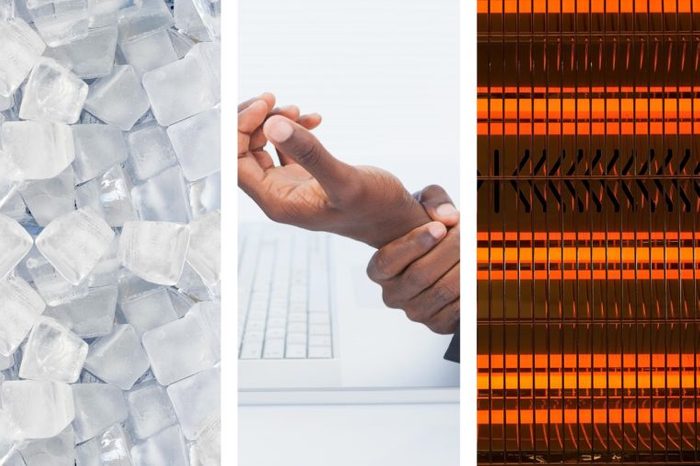
Tendinitis: Ice, then heat
According to the Mayo Clinic, ice works best in the first three days after the injury to help reduce inflammation—and after those first three days, applying heat can increase blood flow to the injury to help speed up healing.
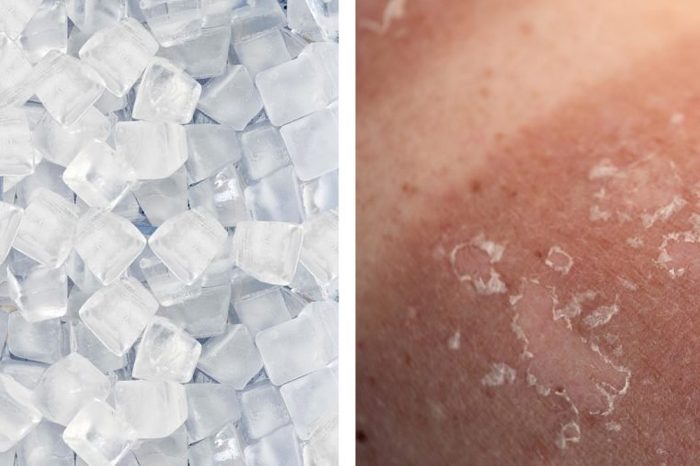
Sunburns: Ice
Cold compresses can help reduce pain and swelling that come from spending a little too long in the sun (or forgetting sunscreen!). To get quick relief, apply towel-wrapped cold compresses (not straight-up ice) to help soothe your burn.
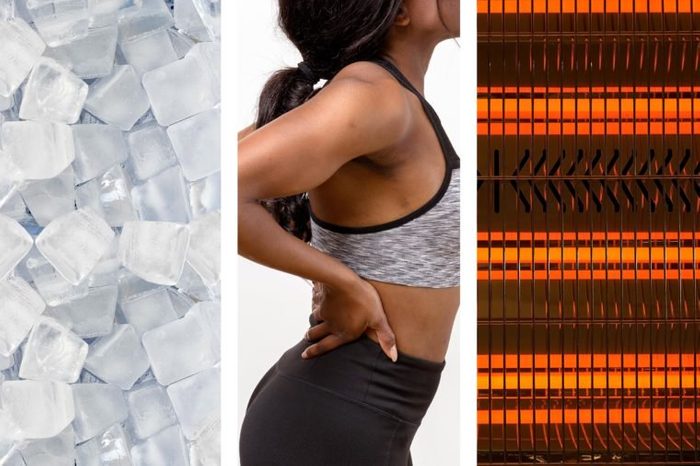
Sciatic pain: Ice, then heat
Sciatic pain originates in the back and radiates pain or numbness down the leg. You might need a cold pack or heat pack placed on the lower back, not the leg. “Oftentimes, people will attempt to utilize heat or ice to address symptoms at the location in which they occur,” Yellin says. “This may seem like a good idea in theory; however, if the symptoms are neurological in nature and their root cause is closer to the spine, then applying ice at the spine is what is needed. Applying heat or ice where the symptoms are located, such as down the back of the leg or calf, will not do much.”
Only geniuses will get these 30 medical trivia questions right.
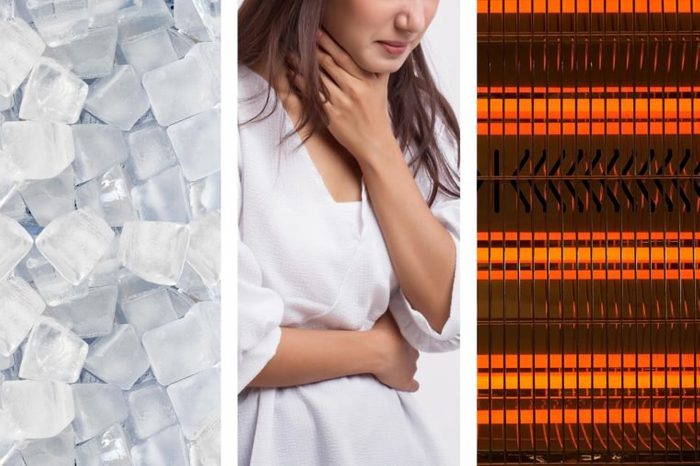
Sore throat: Ice or heat
If you’re dealing with a sore throat, you can take your pick of potential soothers. Sipping hot tea or soup or eating ice pops or ice cream—either one could help make your symptoms feel better. Gargling is another simple and effective way to soothe your pain.
Try one of these 16 natural gargles to ease sore throat pain.